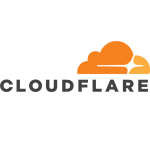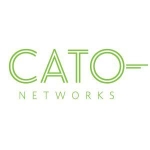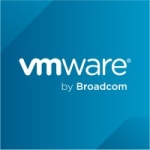What is our primary use case?
We're a school board that uses FortiSASE to protect our students and endpoint devices in school and at home. There was a big push to implement ForiSASE in the last two years due to the COVID lockdown. When the schools shut down, we needed to ensure the same level of protection for our students at home that they had while in school.
The other aspect is providing a secure environment for board office staff working remotely. They can securely access the board network and resources in our data center using the security leveraged inside FortiSASE.
How has it helped my organization?
FortiSASE seamlessly integrated with our SD-WAN and cloud-delivered security solutions because all our on-premise equipment is Fortinet right now. Integrating everything is effortless. With a click, we migrated from FortiClient to FortiSASE and pushed the logs back into our Fortinet environment with an IP address entry.
FortiSASE helped us consolidate our solutions. Before FortiSASE, we weren't doing anything with ZTNA, enabling us to move into that realm. In many ways, ZTNA is essential to get some things working for remote users. Users can still do what they did with a traditional VPN, but now ZTNA improves the security posture.
Solution consolidation is crucial because the education ministry requires it. It also lowers our insurance costs because our cyber security coverage provider checks to ensure we have these systems in place. It helps with the premiums. FortiSASE allowed us to discontinue our on-prem FortiEMS and FortiClient. It simplified management because we only have to deal with one system rather than making changes to five or six different ones.
FortiSASE improved our operational efficiency because we manage one system now that manages all the sub-pieces to it. Our endpoint users report faster use when connected to the SASE environment than when it was going through on-prem systems. We've seen fewer help desk tickets from those kinds of complaints.
It helped us strengthen our security posture. While we've always had endpoint protection everywhere, FortiSASE has made it simpler to deploy ZTNA, inspection, and a few other pieces we weren't doing previously. Doing this was more complicated on on-prem solutions.
What is most valuable?
Deep packet inspection is easier to deploy in the FortiSASE environment. It's much simpler to configure one-touch deployment. It was considerably more convoluted to get that to work using FortiClient. All that processing horsepower is happening in Fortinet's cloud infrastructure, reducing the load on our local routers and on-prem FortiGate firewalls.
There wasn't much of a learning curve because we are already a Fortinet organization. We still use all the same pieces, but the interface is slightly different. Still, I don't think the average user would have difficulty picking the solution up. They've got some excellent documentation and support to help you through any questions you may have.
FortiSASE lets us manage everything from one web interface. That's the most significant benefit. We also use FortiManager, but it could only do so much when we only used on-prem systems. We still need to touch the EMS server and a few other interfaces to make all the pieces work. FortiSASE puts everything in one place.
If something doesn't work, you've got support there to help you out. Previously, we had local support, but it's more complicated because you needed to explain your environment. The SASE environment is under their control, so they know what it looks like and what they're dealing with.
What needs improvement?
FortiSASE is a work in progress. One area where there is room for improvement is the ability to use FortiSASE on an endpoint that doesn't have the client on it. Other solutions do that by building a VPN tunnel from their on-prem router into the SASE environment. FortiSASE doesn't have that feature yet, but it is on the roadmap for Q3 of this year. I've seen it in their development environment.
The only other drawback is that your security posture is reduced if you lose your connection. This applies to any SASE solution.
Buyer's Guide
FortiSASE
October 2025
Learn what your peers think about FortiSASE. Get advice and tips from experienced pros sharing their opinions. Updated: October 2025.
868,787 professionals have used our research since 2012.
For how long have I used the solution?
We've been using FortiSASE for 14 months.
What do I think about the scalability of the solution?
The scalability is seamless. We don't see it on our side. Ultimately, the benefit of a cloud solution is the ease of expansion. It allows you to grow that solution without changing hardware. You can double your size tomorrow if necessary. It takes a lot of the processing load off of local systems. All that information is processed in the cloud infrastructure, so you're not having to place the burden on your endpoint or your router—you're just letting that traffic pass.
How are customer service and support?
I rate Fortinet's support an eight out of ten. Tech support for the FortiSASE environment is decent. The FortiSASE team isn't huge, but they're knowledgeable and focused on the products, so we've been able to address any issues quickly.
How would you rate customer service and support?
Which solution did I use previously and why did I switch?
We previously used on-prem Fortinet solutions to do everything FortiSASE offers. We had FortiClient, FortiSandbox, FortiNAC, FortiGate, etc. It was more complex to manage because we had to set up each of those systems individually to make everything work. It was harder to notice if one of those pieces failed, but it has all been simplified under the FortiSASE interface.
How was the initial setup?
We deploy FortiSASE through Intune to all our users, whether on-prem or remote. It was straightforward, and we deployed 5,000 devices in two weeks. We have 26 sites, and we deployed them one at a time. In some cases, we could deal with multiple sites each day. We did it with an in-house team of seven people, including me. FortiSASE requires no maintenance on my side.
What was our ROI?
We've reduced the upfront purchase cost by eliminating some FortiGate firewalls. FortiSASE was cost-neutral because firewall savings offset the money we spent on FortiSASE. We haven't calculated the return on investment, but we expect it to be cost-neutral at the very least. We should see some savings, but I can't put a percentage on it at this point.
We saw a fast time-to-value because we didn't need much training. We probably would've spent two or three months training our staff on the product if we had gone with Zscaler or Netskope. It would require much more investment in learning the product. Our time-to-value was almost instant.
What's my experience with pricing, setup cost, and licensing?
I can only speak about the pricing for education users because we get discounts. Other users aren't going to get the same price, but FortiSASE is competitive with the other products out there. All the solutions came in at the same price, so it just came down to the product that works best for us.
It's worked out well for us. Fortinet worked closely with the Ministry of Education to offer aggressive price discounts. Dealing with one SKU once a year rather than managing five or six different ones is much easier.
We deployed FortiSASE when the license for our Fortinet firewalls was set to expire. By shifting the traffic-processing burden from our FortiGate firewalls to the FortiSASE, we could downsize FortiGate, reducing the five-year cost of our FortiGate firewalls in half. Now, those costs have been rolled into the FortiSASE budget line. It's more convenient for us to budget that way. Education can't hold funds from one year to the next, so it's better to pay for a SASE subscription instead of a significant upfront cost.
Which other solutions did I evaluate?
In addition to FortiSASE, we evaluated Netskope and Zscaler. They were all priced about the same. However, we were already a Fortinet customer, so we didn't need to train anybody to manage FortiSASE because everyone had used the interface. Everyone had used FortiClient, which has the same look and feel as FortiSASE.
It ultimately came down to how quickly we could deploy FortiSASE and start using it. It was simple to find our existing clients in FortiEMS and transfer them to FortiSASE with one click.
What other advice do I have?
I rate FortiSASE a nine out of ten. I would give it a perfect 10 if it had the ability to work on endpoints without clients.
Which deployment model are you using for this solution?
Public Cloud
If public cloud, private cloud, or hybrid cloud, which cloud provider do you use?
Other
Disclosure: My company does not have a business relationship with this vendor other than being a customer.




















